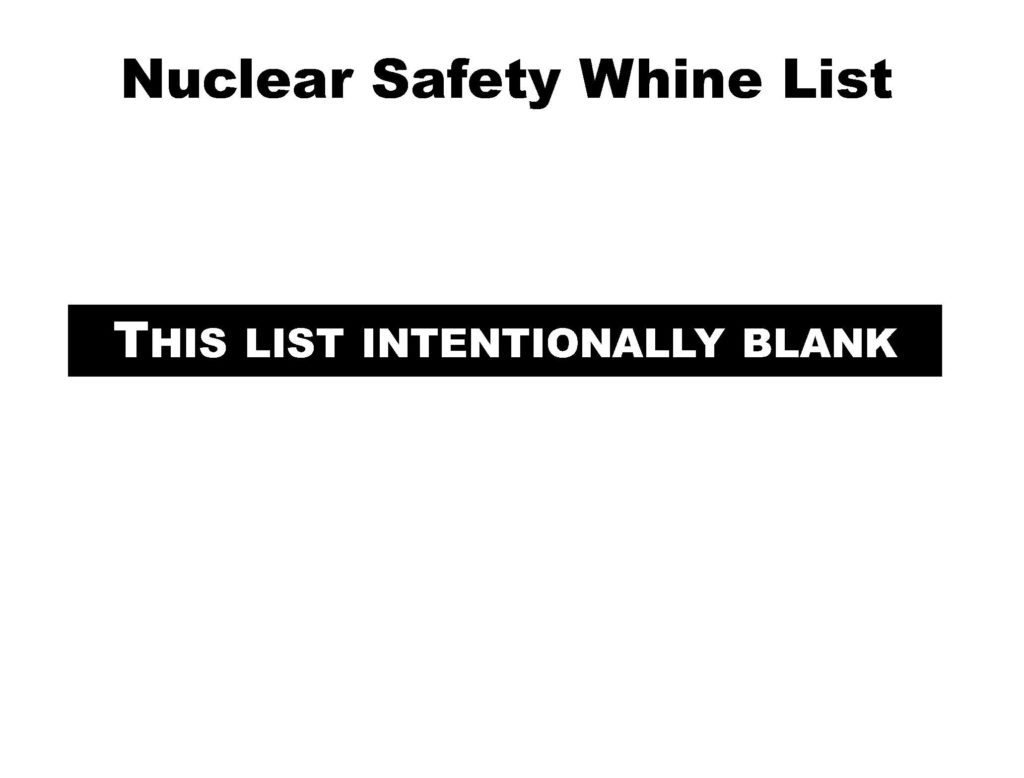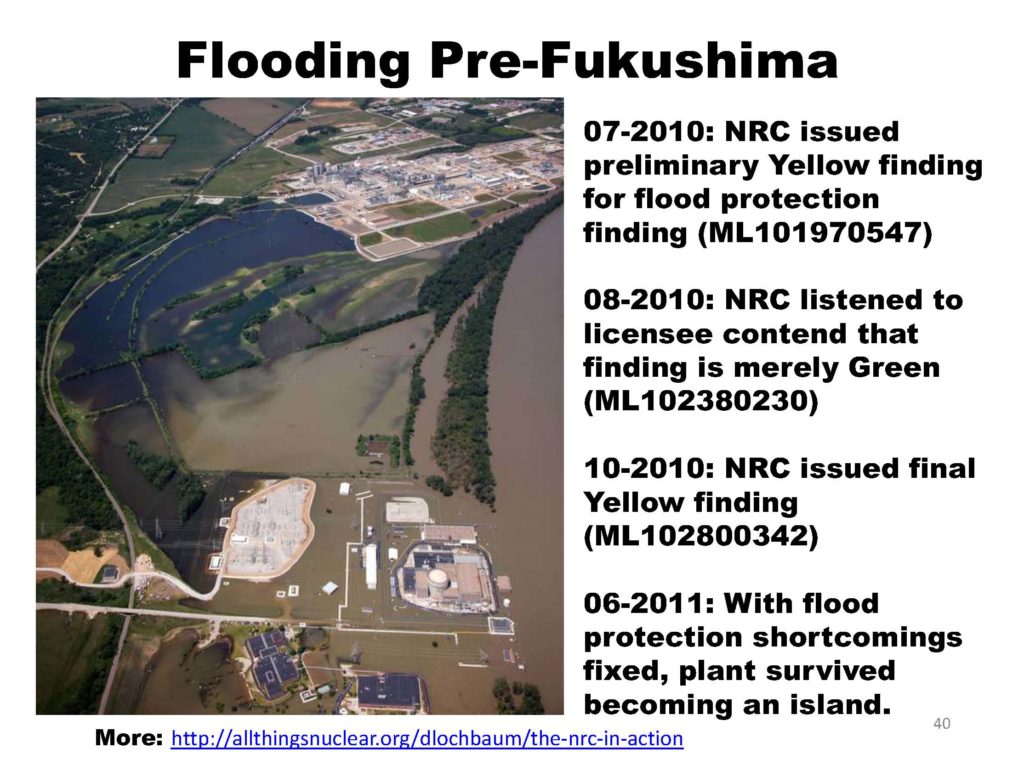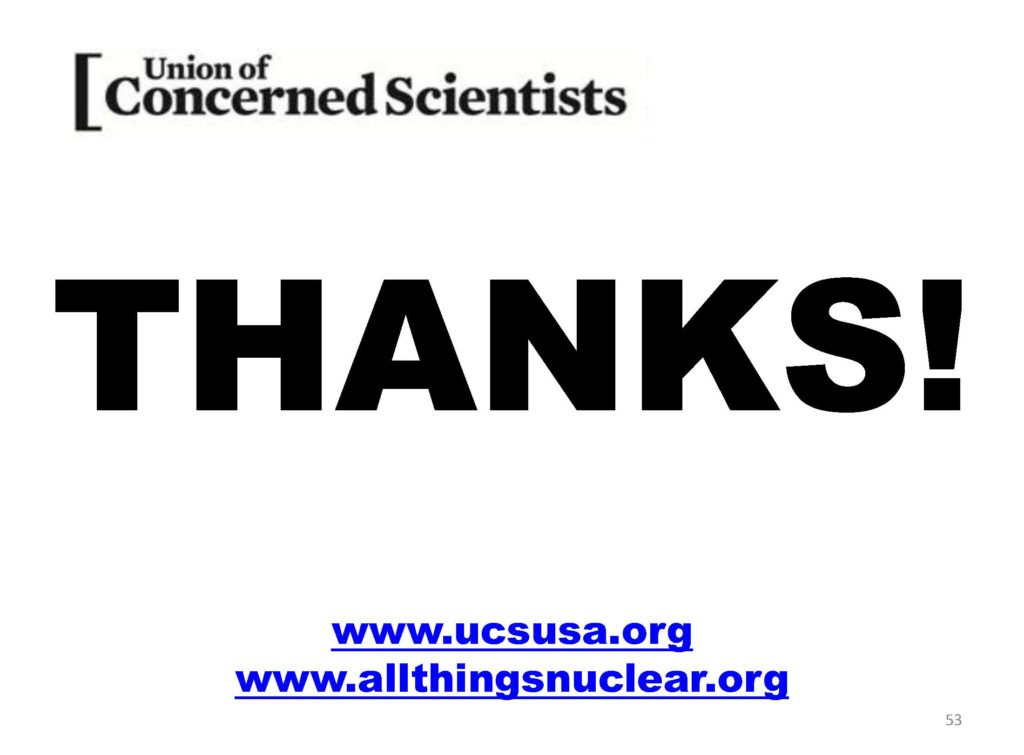This spring, I ran into Mike Weber, Director of the Office of Nuclear Regulatory Research for the Nuclear Regulatory Commission (NRC), at a break during a Commission briefing. The Office of Research hosts a series of seminars which sometimes include presentations by external stakeholders. I asked Mike if it would be possible for me to make a presentation as part of that series.
I explained that I’d made presentations during annual inspector conferences in NRC’s Regions I, II, and III in recent years and would appreciate the opportunity to reach out to the seminars’ audience. Mike commented that he’d heard positive feedback from my regional presentations and would welcome my presentation as part of their seminars. Mike tasked Mark Henry Salley and Felix Gonzalez from the Research staff to work out arrangements with me. The seminar was scheduled for September 19, 2017, in the auditorium of the Two White Flint North offices at NRC headquarters. I appreciate Mike, Mark, and Felix providing me the opportunity I sought to convey a message I truly wanted to deliver.

Fig. 1 (Source: Union of Concerned Scientists)
The title of my presentation at the seminar was “The Other Sides of the Coins.” The NRC subsequently made my presentation slides publicly available in ADAMS, their online digital library.
As I pointed out during my opening remarks, the NRC staff most often hears or reads my statements critical of how the agency did this or didn’t do that. My presentation that day focused on representative positive outcomes achieved by the NRC. For that presentation that day, my whine list was blank by design. Instead, I talked about the other sides of my usual two cents’ worth.

Fig. 2 (Source: Union of Concerned Scientists)
I summarized eight positive outcomes achieved by the NRC and listed five other positive outcomes. I emphasized that these were representative positive outcomes and far from an unabridged accounting. I told the audience members that I fully expected they would be reminded of other positive outcomes they were involved in as I covered the few during my presentation. Rather than feeling slighted, I hoped they would feel acknowledged and appreciated by extension.
One of the eight positive outcomes I summarized was the inadequate flooding protection identified by NRC inspectors at the Fort Calhoun nuclear plant in Nebraska. The NRC issued a preliminary Yellow finding—the second highest severity in its Green, White, Yellow, and Red classification system—in July 2010 for the flood protection deficiencies. To help put that Yellow finding in context, the NRC issued 827 findings during 2010: 816 Green, 9 White, and 2 Yellow. It was hardly a routine, run of the mill issuance.
The plant’s owner formally contested the preliminary Yellow finding, contending among other things that Fort Calhoun had operated for nearly 30 years with its flood protective measures, so they must be sufficient. The owner admitted that some upgrades might be appropriate, but contended that the finding should be Green, not Yellow.
The NRC seriously considered the owner’s appeal and revisited its finding and its severity determination. The NRC reached the same conclusion and issued the final Yellow finding in October 2010. The NRC then monitored the owner’s efforts to remedy the flood protection deficiencies.
The NRC’s findings and, more importantly, the owner’s fixes certainly came in handy when Fort Calhoun (the sandbagged dry spot in the lower right corner of Figure 3) literally became an island in the Missouri River in June 2011.
Recall that the NRC inspectors identified flood protection deficiencies nearly 8 months before the Fukushima nuclear plant in Japan experienced three reactor meltdowns due to flooding. Rather than waiting for the horses to trot away before closing the barn door, the NRC acted to close an open door to protect the horses before they faced harm. Kudos!

Fig. 3 (Source: Union of Concerned Scientists)
The real reason for my presentation in September and my commentary now is to acknowledge the efforts of the NRC staff. My concluding slide pointed out that tens of millions of Americans live within 50 miles of operating nuclear power plants and tens of thousands of Americans work at these operating plants. The efforts of the NRC staff make these Americans safer and more secure. I observed that the NRC staff deserved big thanks for their efforts and my final slide attempted to symbolically convey our appreciation. (The thanks were way bigger on the large projection screen in the auditorium. To replicate that experience, lean forward until your face is mere inches away from your screen.)

Fig. 4 (Source: Union of Concerned Scientists)
